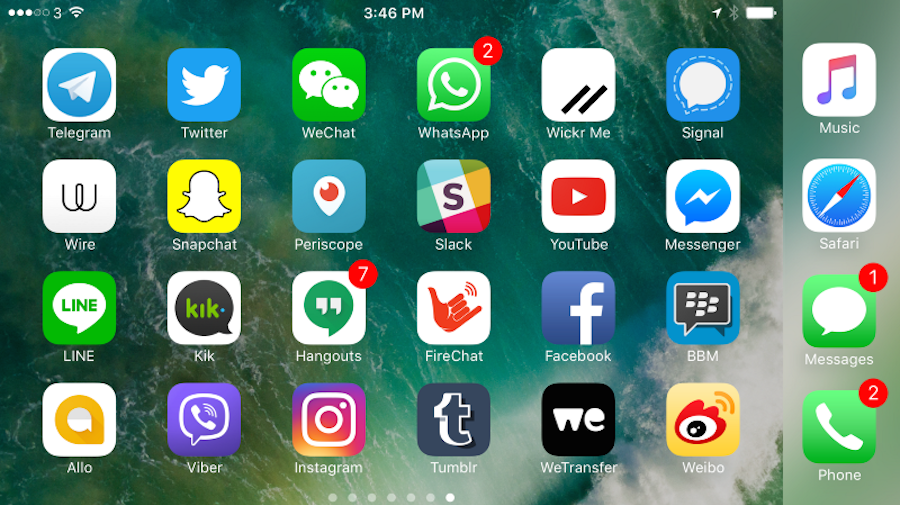The added dimension social media has brought to news reporting has made it an indispensable source for journalists. In breaking news situations, it’s no longer an option to ignore what’s happening on social networks, as eyewitnesses and people directly affected by events post publicly on YouTube, Facebook, Instagram, Twitter and elsewhere.
But what happens when those same witnesses and sources go somewhere else? Somewhere less public? Well, that’s just what’s been happening as more and more people are beginning to use services like Telegram, Snapchat, WhatsApp, Wickr, WeChat, and Diaspora, to name a few.
These networks vary in style and functionality, but they offer users encryption features, the chance to share anonymously, and to do so in tightly controlled groups or closed communities. And their growth has been remarkable. In February of this year, WhatsApp announced it had more than a billion users; in April, Telegram said its channels were getting 400 million daily views. More recent reports suggest Snapchat is preparing for an IPO that may value the company at $25 billion (£20bn/€23bn) or more.
Much of the content shared on these networks will still make it onto social media. However, the source will often remain unclear and difficult to trace. This represents a big challenge for reporters interested in accountability, attribution and authorised use.
In the absence of a direct link to the source, how can newsrooms be satisfied they know the agenda, if any, at play? Or that they have a clear picture of what’s being shown or described? How can journalists be sure the rights and privacy of the person who owns the material are being respected? And how can they be satisfied that audiences are being given a clear context?
At Storyful, we have been working hard to adapt to this new norm, trying to better understand how uploaders interact and communicate on closed networks. We are constantly working to evolve best practices, technologically and editorially, in the verification and sourcing of content emanating from closed networks.
In this week’s episode of The Storyful Podcast, host Laura Byrne is joined by Storyful journalists Ben Decker and Padraic Ryan, alongside Storyful product owner Eamonn Kennedy, and developer Dave McGinn, to discuss the emergence of closed networks and the ways in which newsrooms must adapt.
Here are some of Storyful’s tips on using closed networks for newsgathering:
- Know your networks. Keep up to date with the most popular and emerging platforms.
- Identify where each individual closed network is popular, geographically, and what demographic is using the network.
- Integrate closed networks into the editorial workflow.
- Ensure your team has ready access to these networks in a breaking news situation.
- Delegate: Assign point-people for individual networks — these people can share knowledge and train other team members.
- Build relationships. Create region- or topic-specific groups and invite sources to join. Engaging with your sources regularly is a good way to expand your editorial reach.
- Verify! The people behind the video help us verify that what we’re seeing is legitimate. Knowing their perspective is crucial. Reach out, get to know them and how their experience frames what they shoot.
- Respect privacy. Just because a person shares a video on a closed network, it doesn’t give you permission to use it. Seek the proper clearances from the original uploader.
- Consider the uploader’s safety. What are the consequences for the uploader if your news organisation uses this content? Use editorial judgement in considering each individual piece of content and the consequences its use may have on an uploader.
Ben Decker and Padraic Ryan are journalists at Storyful, a member of First Draft, a coalition of experts sharing top tips and training in how to handle eyewitness media.
Follow First Draft on Twitter for more updates, advice guides and case studies.
The Storyful Podcast is available on iTunes, Stitcher, Tunein and Soundcloud.



